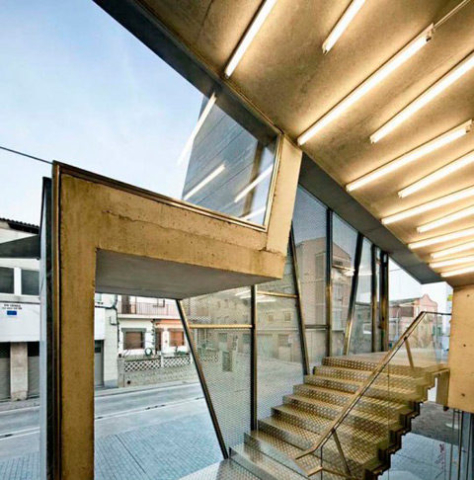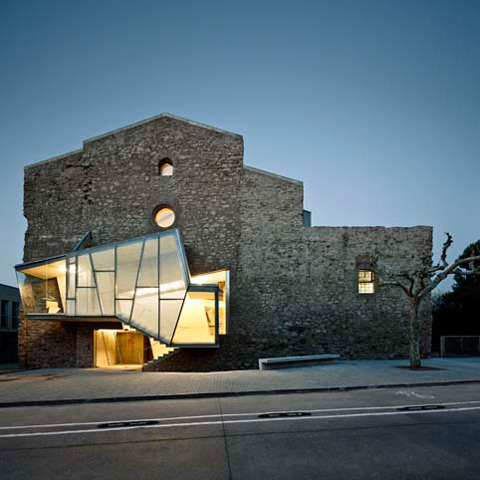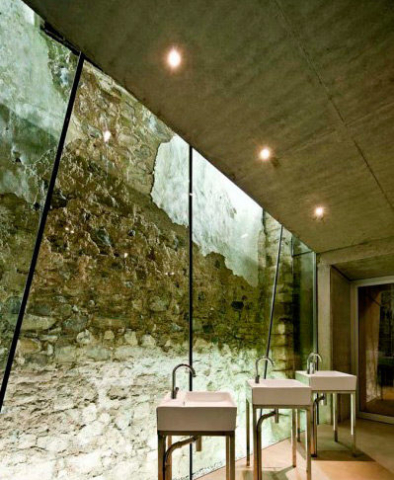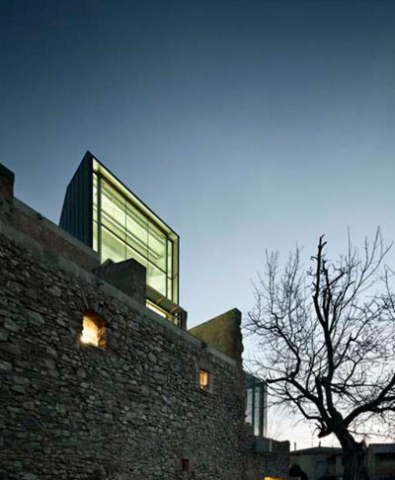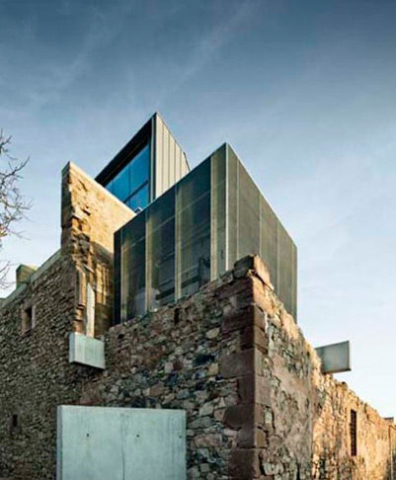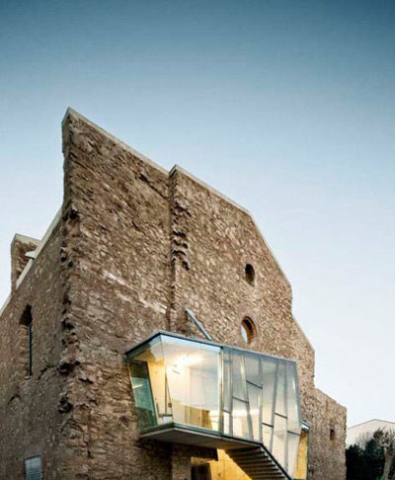Arhitekte: David Closes
Lokacija: Santpedor , Španija
Godina projekta: 2011.
Površina projekta: 950.0 m2
Fotografije: Jordi Surroca
 Manastir Sant Francesc, smešten u malom gradu Katalonije – Santpedor, franački sveštenici izgradili su početkom 18. veka . 1835. godine manastir je opustošen. Nakon toga objekat je počeo da propada što se završilo njegovim rušenjem 2000. godine. Ostala je da stoji samo crkva ali u dosta lošem stanju.
Manastir Sant Francesc, smešten u malom gradu Katalonije – Santpedor, franački sveštenici izgradili su početkom 18. veka . 1835. godine manastir je opustošen. Nakon toga objekat je počeo da propada što se završilo njegovim rušenjem 2000. godine. Ostala je da stoji samo crkva ali u dosta lošem stanju.
Projekat je imao za cilj da transformiše crkvu u auditorijum i multifunkcionalni kulturni objekat. Intervencija je učinila crkvu stabilnijom bez brisanja procesa propadanja kroz koji je objekat prošao. Projekatom su zadržane dimenzije crkvenog unutrašnjeg prostora i , takođe, neobični upadi prirodnog svetla kroz delimično razrušen krov. Umesto rekonstrukcije crkve, intervencija je samo konsolidovala staro tkivo praveći jasnu razliku između novih elemenata izvedenih iz originalnog stanja. Sprovedena obnova ne sakriva istorijske tragove i najvažnjiju prostornu vrednost objekta ali se ne odriče upotrebe savremenog jezika u novim elementima koji su uvedeni intervencijom.
Novi ubačeni programski volumeni (kao što su vertikalni prilazi i tehnička oprema) locirani su delimično izvan crkve sa ciljem da se sačuva celovitost unutrašnjeg naosa. Pored toga, nove rampe i stepenice omogućuju neuobičajenu kružnu trasu kroz objekat sa neverovatnim i raznovrsnim vizurama.
Intervencija je urađena tako da čuva istorijsko nasleđe objekta i paralelno dodaje nove vrednosti koje naglašavaju i izdvajaju drevnu crkvu na savremen način.
U budućem periodu, projekat će biti kompletiran u finalnoj fazi organizovanjem istorijske arhive na gornjim spratovima sa južne strane crkve.
Architects: David Closes
Location: Santpedor, Spain
Project Year: 2011
Project Area: 950.0 sqm
Photographs: Jordi Surroca
The Sant Francesc convent, located in the small Catalan town of Santpedor, was built in the early 18th century by Franciscan priests. In 1835 the convent was sacked. Thereafter began the process of progressive deterioration of the building that ended with its demolition in 2000. Only the church remained standing, but in a completely ruinous state.
The project was aimed to convert the church into an auditorium and a multifunctional cultural facility. The intervention has consolidated the church without deleting the process of deterioration and collapse that the building had suffered. The project has maintained the dimensions of the church interior space and, also, the unusual entries of natural light produced by partial roof collapses. Rather than reconstructing the church, the intervention has just consolidated the old fabric distinguishing clearly the new elements executed of the original ones. The renovation carried out allows to read historical wounds and the building’s most important spatial values without giving up the use of contemporary language in the new elements introduced in the intervention.
The new programmatic volumes inserted (as vertical accesses or technical equipment) have been located partially outside of the church with the aim of preserving the inner space unity of the nave. In addition, the new stairs and ramps provide an unwonted circular route across the building with amazing and diverse views.
The intervention preserves the historical heritage of the building and simultaneously adds new values which highlight and singularize the ancient church in a contemporary way.
In the future, a final phase will complete the project by placing a historical archive on the upper floors of the south side of the church.



